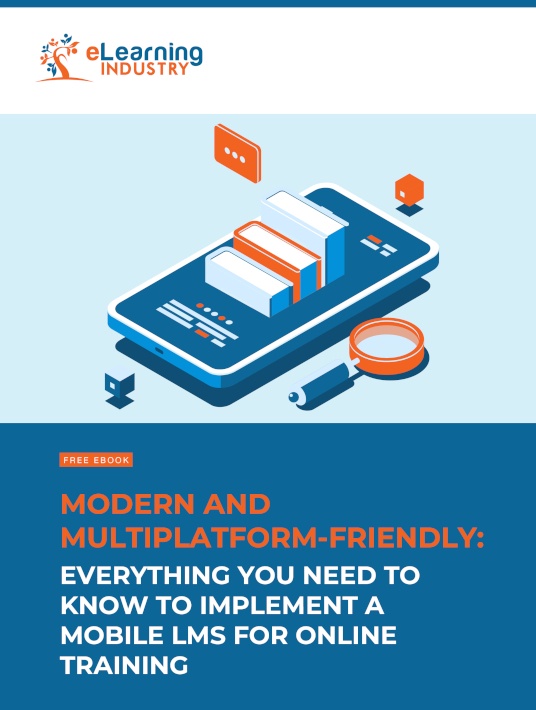Investing In A New Mobile LMS: 6 Mobile Learning Trends To Consider
A lot of us are making the switch to mobile because statistics suggest it’s the medium consumers prefer. In a corporate training set-up, listening to employees’ preferences enhances uptake and recall. There are also certain trends that make mobile migration easier and more effective. But these trends aren’t a one-size-fits-all methodology. You have to be sure that the trend you choose is appropriate for your organizational needs and corporate environment. Here are some of the top mobile learning trends to consider before investing in a new mobile LMS for your organization.

1. Social Media Integration
Part of the reason social media is so widespread is its immediacy. We’ve trained ourselves to reach for our phones without thinking. It could be a few idle seconds in the elevator or a natural pause during a conversation. With endless app notifications, it has become a reflexive response. Utilize this for training purposes. Link your mobile LMS to the top social media platforms preferred by your staff. Do a survey to get more accurate data. They’ll respond faster than they would to email, making it a quick tool for corporate communication. Sharing training badges on social media is also a helpful motivator because we all thrive on bragging rights. You can even post frequent updates to tell them about upcoming courses and live events you’ll be hosting.
2. Bite-Size Simulations
Training modules disseminated via mobile have to be short. The screen is small and backlit, so mobile learners can only study so long before it strains their eyes and minds. Articles solve this (and take advantage of it too) by scattering text with animated ads. Mobile games use colorful splashes and exciting sound effects to hold attention and camouflage strain. For online training purposes, you can use immersive simulations that take two to five minutes. Make it a multimedia experience that engages multiple senses, just like their favorite mobile game. Sound effects, vibrations, and earphones are all part of the mobile training package.
3. On-The-Go Gamification
You can develop all kinds of content using your mobile LMS, but only if your staff has the right technical ability. Think of the gamification options you’d like to include. Then make sure (a) your mobile LMS has the tools to build them and (b) your IT department can do it. Gamification varies from quest-based branching scenarios to leader boards and completion badges. If your corporate learner’s job involves a lot of time outside the office, incorporate this into their eLearning course. They can check in at various venues, earning training bonuses and awards. For example, they could earn a ‘client site follow-up badge’ in their customer’s lobby. Or they could unlock an ‘expert parking’ badge when they find a legal parking spot in record time.
4. Bring Your Own Device (BYOD)
Some of us have multiple handsets or phone lines for business and social purposes. Others resolve the problem with dual-sim or quad-sim smartphones. Organizations may prefer to assign you an office phone and load it with airtime or tie it to an office-paid phone plan. This does create an added expense though as well as an extra responsibility. Your mobile LMS can track office assets, including cars and phones, but this can make employees feel vulnerable. Let them use their own devices. They have a personal attachment as is, and it preserves their sense of autonomy. Plus, they can harness tools in their phones that yours may not have. Make a list. Be sure the mobile LMS you buy can cut across all the phone/ tablet models in your office.
5. Mobile-First Functionality
Many organizations take the wrong approach when they make the switch to mobile. They start with a web platform and then tweak it for mobile screens. This dilutes functionality because mobile becomes an afterthought. Work with a mobile LMS provider whose focus starts with mobile, then stretches to larger screen formats. It’s a richer experience for your employees and better value for money. Speaking of corporate learner experience, encourage them to upload their own online training content. It could be an article they found useful, a smartphone video, or even a relevant meme. This active involvement gets them more invested in their online training, so they’ll remember more of the knowledge they acquire. Plus, it makes mobile learning more fun.
6. Multiplatform-Friendly Videos (That Give Employees Full Control)
Videos are still one of the best ways to teach employees how to perform tasks and help them mimic favorable behaviors. However, they must be able to have full control of the playback and audio to get the most from training videos on their mobile devices. Keep in mind that they’ll often be watching in crowded spaces, like offices or commuter trains. Thus, they won’t be able to hear the safety demo instructions, so subtitles are a must. There should also be some element of interactivity, such as embedded buttons they can push to seek out additional information regarding the topic.
There are two mistakes that many corporates make. One, they jump on the latest trend without considering how it will fit their organization. Two, they join the mobile bandwagon without prior preparation. How can you avoid merging these errors and benefiting your business in the process? Confirm your intended mobile LMS has social media integration tools. It should enable mobile learners to gamify on the go, with mini-simulations and content generated by fellow corporate learners. The emphasis should be on mobile-first, and the LMS should be broadly compatible, allowing employees to use their existing devices. They’re already comfy with their own smartphones/tablets, so it will ease the training process.
What are the advantages of developing an eLearning app with a mobile LMS versus using a mobile-optimized one? Download our eBook Modern And Multiplatform-Friendly: Everything You Need To Know To Implement A Mobile LMS For Online Training for tips on how to deploy a modern and multiplatform-friendly training program with a mobile LMS and 4 ways a mobile learning platform can help your team provide an amazing customer experience to boost those satisfaction scores. It features insider secrets to find a flexible mobile LMS app for blended training, as well as a must-have features list to help you find the right mobile LMS for your organization.








